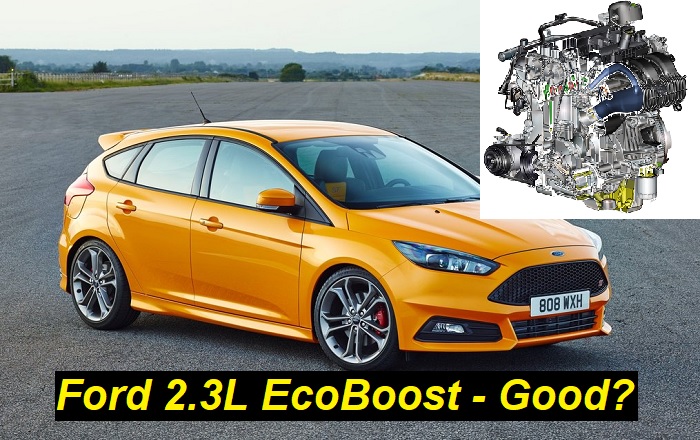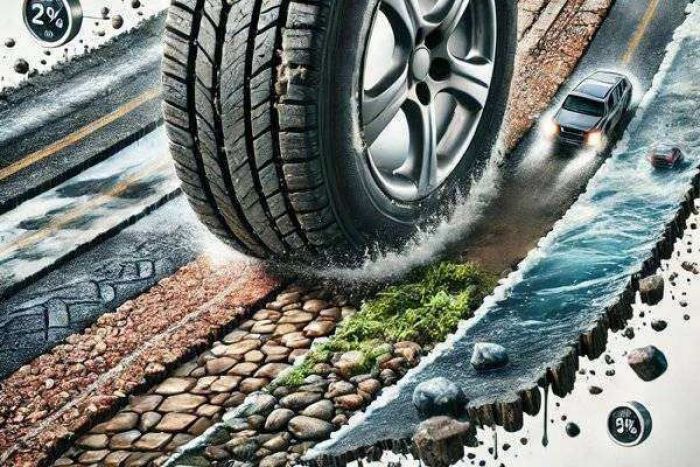If you are a fan of Ford cars, you know for sure that EcoBoost engines are the new era of the technologies used by this company. These engines all come with turbochargers that are very efficient and they make these engines really good in terms of power, torque, fuel consumption, etc. Most EcoBoost engines are mid-sized, but there are small-displacement engines with these kinds of turbochargers, too.
Today, we'll be speaking about the 2.3L EcoBoost engine. We will touch on its longevity, reveal its main problems, and speak about its main specs that you may want to know. We'll try to talk about this wonderful engine without many technical terms so that every car owner could understand us and get something useful from this article.

Key features and my opinion about the engine
- Production years:2015-now
- Average lifespan of 2.3L EcoBoost:120,000-140,000 miles
- Fuel supply type:direct injection
- Power range:270-395 hp
- Fuel efficiency:average
- Engine block material:aluminum
- Engine reliability score:low
- The most common problems:fatal overheating issues, very unreliable fuel supply system, turbocharger failure.
Some common facts and specs you will want to know
Ford 2.3L EcoBoost is actually a very popular engine. It's used in some vehicles and it's rumored to be one of the most wanted swap engines. The unit has a couple of types that are all made especially for some models. The way the company tunes its 2.3L engines influences its efficiency, longevity, and also other important features.
So, one 2.3L engine may be absolutely different from another 2.3L engine installed in a different vehicle. The engine debuted in 2015 in the Ford Mustang and Lincoln MKC. The engine is produced in Spain for the European market and in Ohio for America. Actually, it has a lot of modifications and each of them is unique.
Here are some features you may want to know about this engine:
- the displacement of 2.3 liters is not that big, but adding a big turbocharger changes everything and the engine becomes wild;
- the power range is from 270 to 395 horsepower which is insanely much for a unit with such a small displacement;
- also, the torque is quite high - from 310 to 369 lb-ft which is good for any vehicle including even a truck;
- the engine has an aluminum engine block and aluminum head - it's just a classic construction, no surprises here;
- the engine is based on one of the classic Ford engines and it is not equipped with a lot of technological units;
- the most technological part of the engine is the EcoBoost turbocharger which is quite cool in terms of efficiency;
- all engines use direct injection which may cause some problems with servicing, but it gives a lot of perks, too.
When you are driving a big car powered by the 2.3 EcoBoost engine, you will never think of its small displacement. This may happen sometimes when you are driving a vehicle that has a 1.0 EcoBoost under the hood. This small engine needs to be rotated much to allow you optimal acceleration and other good things.
But the 2.3L EcoBoost is different. It feels more like V6 but it's actually an inline-4 engine with 4 cylinders and quite simple construction. It's all thanks to the wonderful turbocharger that magically changes the way this engine can go and feel. Well, we like the way it feels, but what about the long run? Is the 2.3 EcoBoost still good for long driving?
Vehicles that have been equipped with the 2.3 EcoBoost engine
It all started with the Mustang and everyone thought that the engine will be purely for sports driving. But it actually was made for different vehicles and it was a very good engine to use in numerous models of cars. So, Ford decided to tune it for different models and it was the right decision - just look at those reviews and customers' opinions.
Here is the list of vehicles where this engine is used:
- Ford Ranger;
- Ford Everest;
- Ford Explorer;
- Ford Bronco;
- Ford Mustang;
- Ford Focus RS;
- Ford Focus ST;
- Lincoln MKC;
- Lincoln Corsair.
Also, the tuned 2.3 EcoBoost engine was used in some sports cars by Zenos, Elemental, VUHL, and Dallara.
You can clearly see that the engine is not bad at all. It was even used in what we call supercars. It means that you can even tune this engine to show more power and torque, although we don't recommend it.
Now, it's time to talk about the good and bad sides of the engine.
Is the 2.3 EcoBoost a durable engine?
The longevity of the 2.3L Ecoboost depends much on the version. If we are talking about the 395-horsepower version used in VUHL supercars, no, it's not durable at all. But it goes like crazy. If we take the Focus ST or the Mustang, these engines show decent reliability and longevity.
The main thing is that the EcoBoost engines are not very demanding in terms of service and maintenance. You should just regularly maintain it changing oil and filters and that's all. It's not like in all those sporty engines by other brands.
We would say that the average longevity of the 2.3L EcoBoost engine is around 150,000 miles. But it depends on the way you maintain and service your car. Sometimes it will be worse just because you use the vehicle for racing but don't use special racing oil and don't change oil and filters more often.
Why do people love the 2.3 EcoBoost engine?
This is not a bad engine at all. It offers great driving, wonderful power, and torque, and it's actually quite reliable compared with other engines of this type. The engine is simple and optimal in terms of construction, it's not hard to repair if you need this.
Also, we know about some other important pros:
- wonderful power which gives you freedom of driving style;
- great sound even though it's just a 4-cylinder engine;
- great longevity compared to other engines of this kind;
- optimal gas mileage both in the city and on the highway;
- flexibility and different versions for numerous models of cars;
- price - even if you need to replace this engine, it won't cost you a fortune.
In a sporty Focus ST, this engine will ensure an average gas mileage of around 24 mpg in the city and 37 mpg on the highway. Of course, the Ranger will burn more fuel due to its weight. But anyway, the consumption will be very good.
What about the problems with the 2.3 EcoBoost?
Of course, you don't only want to hear some good news. Let's turn to the problems and bad sides of this engine and we want to assure you that we have something to talk about in this section. Unfortunately, a lot of EcoBoost engines still have some common troubles that happen often and make their owners come to repair shops and spend thousands of dollars to repair the engines.
Here are some of the most common problems with the 2.3 EcoBoost engine:
- Fuel injection problems. Unfortunately, the direct injection system is not very reliable, although it's extremely efficient and cool for gas mileage. You will need to clean and repair it once every 50,000 miles or something like that.
- Turbocharger problems. The turbocharger is actually one of the reasons for the poor longevity of all EcoBoost engines compared to non-turbocharged units. Once it breaks, you will think twice about whether you want to pay for a repair or just buy a new engine because the prices will not differ much.
- Overheating problems. This engine is made for sports driving but it can't stand overheating. Once you rev up your 2.3 EcoBoost engine for too long, it may have problems with the head gasket and the head itself. The repair will be extremely expensive.
- Oil consumption problems. You need to keep an eye on oil consumption because once this engine runs out of oil, it will start killing itself intensively. This will lead to engine replacement soon.
Of course, the engine will send you some errors and messages if something goes wrong. But you need to understand that you have a sporty engine that needs more care than a simple naturally aspirated unit.
Also, you should use only original oil for this engine. Otherwise, you will find it broken just after some years and 20-30 thousand miles of driving. The Ford oil is prepared specially for the construction of the EcoBoost engines.
Final words
Once you drive a vehicle powered by the 2.3L EcoBoost, you will never want to drive any vehicle powered by a simple naturally aspirated engine. The fun you get from driving is unique. Of course, the 2.3 EcoBoost still has some problems and it's not that durable, but you pay for the fun, power, and flexibility you get from this wonderful engine.
We don't think that the EcoBoost engines are the best units in the world. But we believe they are much better than those huge 5- or 6-liter engines with 8 cylinders and the same power and torque. They are more economical and actually better for ecology. Isn't that enough?
About the authors
The CarAraC research team is composed of seasoned auto mechanics and automotive industry professionals, including individuals with advanced degrees and certifications in their field. Our team members boast prestigious credentials, reflecting their extensive knowledge and skills. These qualifications include: IMI: Institute of the Motor Industry, ASE-Certified Master Automobile Technicians; Coventry University, Graduate of MA in Automotive Journalism; Politecnico di Torino, Italy, MS Automotive Engineering; Ss. Cyril and Methodius University in Skopje, Mechanical University in Skopje; TOC Automotive College; DHA Suffa University, Department of Mechanical Engineering






Add comment